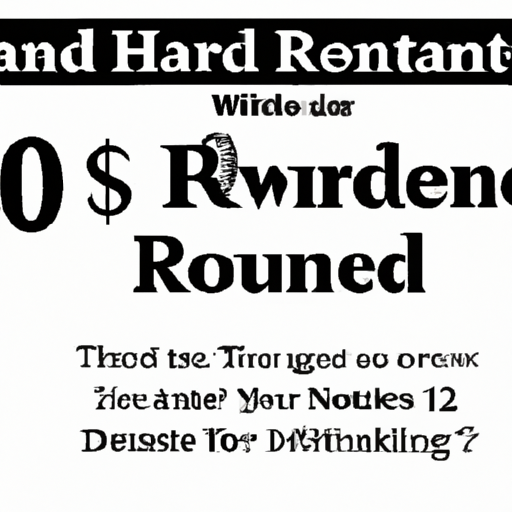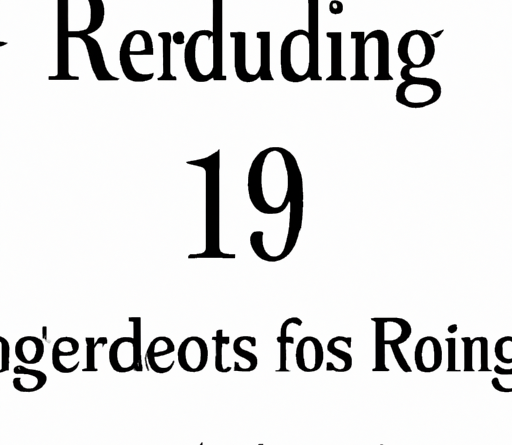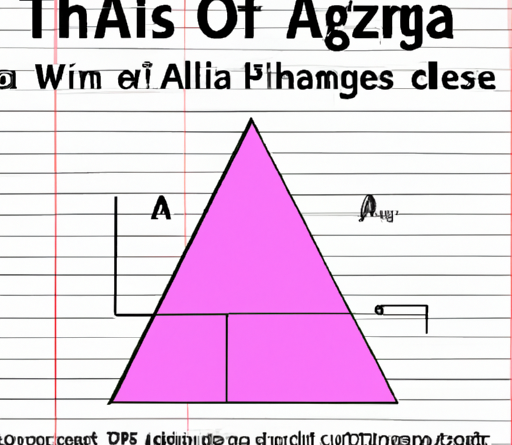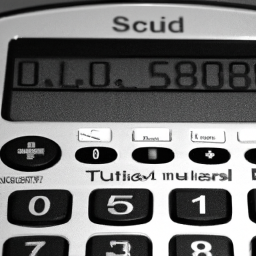
In this article, we will be discussing how to round numbers to the nearest hundredth. We will provide a step-by-step guide on the process, ensuring that you understand each step along the way. By the end, you’ll have a clear understanding of how to round numbers to the nearest hundredth and be able to apply this skill confidently in various contexts. So, let’s get started and enhance your knowledge of rounding numbers!
Table of Contents
Understanding Rounding
What is rounding?
Rounding is a mathematical process of approximating a number to a specified decimal place or significant figure. It involves adjusting a number to a value that is easier to work with or understand. Most commonly, rounding is used to simplify numbers with many decimal places into ones with fewer decimal places.
Why is rounding important?
Rounding is an essential concept in mathematics and everyday life. It allows us to work with numbers efficiently and communicate information more clearly. Rounding is particularly crucial when dealing with measurements, financial calculations, and scientific data, where precise values may not always be necessary or practical.
Common rounding rules and methods
Various rounding rules and methods exist, but the two most common approaches are rounding up and rounding down. Rounding up involves increasing the number to the next value, while rounding down involves reducing the number to the previous value.
The most widely used rounding method is rounding to the nearest whole number. In this case, numbers ending in .5 or higher are rounded up, while those ending in .4 or lower are rounded down. However, when dealing with decimal numbers, we often need to round to a specific decimal place, such as the nearest hundredth.
What is the Nearest Hundredth?
Definition of hundredth
The hundredth is the second decimal place to the right of the decimal point. It represents a fraction of one hundred (1/100) or 0.01. When rounding to the nearest hundredth, we are approximating a number to the nearest value with two decimal places.
Importance of rounding to the nearest hundredth
Rounding to the nearest hundredth is particularly useful when dealing with monetary values, measurements, and statistical data. It allows for a more concise representation of numbers, making them easier to read, understand, and perform calculations with. Rounding to the nearest hundredth ensures that the rounding error is limited to a maximum of 0.005, providing a reasonable level of accuracy in most scenarios.
Rounding to the Nearest Hundredth
Step-by-step process for rounding to the nearest hundredth
To round a decimal number to the nearest hundredth, follow these steps:
- Identify the digit in the thousandth place (three decimal places to the right of the decimal point).
- If the digit in the hundredth place is 5 or greater, increase the number in the hundredth place by 1.
- If the digit in the hundredth place is 4 or lower, leave the number in the hundredth place as it is.
- Set all digits to the right of the hundredth place to zero.
Examples and illustrations of rounding to the nearest hundredth
Let’s consider the example number 3.5678. To round it to the nearest hundredth:
- The hundredth digit is 6, which is greater than or equal to 5, so we increase the number in the hundredth place by 1.
- The number becomes 3.57, with all digits to the right of the hundredth place set to zero.
Another example is the number 2.4532. To round it to the nearest hundredth:
- The hundredth digit is 4, which is less than 5, so we leave the number in the hundredth place as it is.
- The number becomes 2.45, with all digits to the right of the hundredth place set to zero.
How to use place value to determine the nearest hundredth
Understanding place value is crucial in rounding to the nearest hundredth. The digit immediately to the right of the hundredth place is the thousandth digit. By comparing this digit to 5, you can determine whether to round up or round down. If it is 5 or greater, you round up. If it is 4 or lower, you round down.
Rounding Decimals
Understanding decimal numbers
Decimals are numbers that include a decimal point, separating the whole number part from the fractional part. Each digit to the right of the decimal point represents a fraction of a unit, with each subsequent digit having a value one-tenth (0.1) times smaller than the previous digit. Decimal numbers allow for precise representation of values between whole numbers.
Rounding decimals to the nearest hundredth
To round decimals to the nearest hundredth, follow the same process as rounding to the nearest hundredth described earlier. Take the digit in the thousandth place (three decimal places to the right of the decimal point) and use it to determine whether to round up or round down. Set all digits to the right of the hundredth place to zero.
Dealing with different scenarios and decimal patterns
Rounding decimals can sometimes involve patterns or specific scenarios that require additional attention. For example, when rounding numbers that end in .50, such as 1.50 or 3.50, we follow the same rules as rounding to the nearest whole number. Numbers with a thousandth digit of 5 followed by zeros (e.g., 4.5000) are considered halfway cases and rounded up to the nearest even number.
When faced with repeating decimals, the process involves rounding to a specific number of decimal places, such as the nearest hundredth. In these cases, it’s essential to identify the significant figures and use them to determine the rounding value.
Rounding in Real-Life Situations
Practical applications of rounding to the nearest hundredth
Rounding to the nearest hundredth is widely used in various real-life situations, including:
- Financial calculations: Rounding currency values to the nearest hundredth simplifies transactions and promotes consistency in financial records.
- Measurements: Rounding measurements, such as length or weight, to the nearest hundredth improves readability and practicality.
- Statistical data: Rounding numerical data in surveys or scientific studies to the nearest hundredth makes it easier to analyze and compare.
Importance of accurate approximation in various industries
Accurate approximation plays a crucial role in multiple industries, including:
- Engineering and construction: Rounding measurements ensures precision in designing structures and estimating materials required.
- Pharmaceutical and medical fields: Accurate dosing and drug delivery rely on rounded values to ensure patient safety and treatment effectiveness.
- Statistical analysis: Rounding data to the nearest hundredth helps in conducting accurate statistical research and drawing meaningful conclusions.
Examples of rounding in financial calculations, measurements, and more
In everyday scenarios, rounding to the nearest hundredth can be observed in various contexts:
- A cashier rounding a transaction total to the nearest cent for ease of payment.
- A chef rounding the weight of ingredients to the nearest hundredth of a pound for precise cooking.
- A scientist rounding a measurement of chemical concentration to the nearest hundredth for consistency in experimentation.
Strategies for Efficient Rounding
Tips and tricks to round quickly and accurately
To round to the nearest hundredth more efficiently, consider the following tips:
- Understand the rounding rules and methods to avoid confusion.
- Use mental math techniques to estimate the rounding value quickly.
- Practice rounding exercises to improve speed and accuracy.
Mental math techniques for rounding to the nearest hundredth
Mental math techniques can be helpful when rounding to the nearest hundredth. For example:
- If the digit in the thousandth place is 5, round to the nearest even number.
- Estimate the rounding value by mentally calculating the distance between the hundredth digit and the nearest whole numbers.
Common mistakes to avoid while rounding
When rounding to the nearest hundredth, it’s essential to avoid common pitfalls, such as:
- Confusing the rounding digit with the digit to its right (the thousandth) and rounding incorrectly.
- Forgetting to set all digits to the right of the hundredth place to zero.
Rounding and Significant Figures
Understanding significant figures
Significant figures, also known as significant digits, represent the precision and reliability of a measured or calculated value. They include all digits that are known with certainty, plus one estimated or uncertain digit. In rounding, we consider the significant figures to determine the rounding value.
How to incorporate significant figures in rounding to the nearest hundredth
When considering significant figures, round to the nearest hundredth while maintaining the desired level of precision. For example, if the original value has three significant figures, round to the nearest hundredth while ensuring the final result has two significant figures.
Significance of precision in scientific calculations
Scientific calculations demand a high level of precision to ensure accurate results. Rounding to the nearest hundredth allows scientists and researchers to maintain the desired level of precision while simplifying complex calculations.
Rounding in The Digital World
Rounding in computer programming
In computer programming, rounding often involves both mathematical and practical considerations. Rounding to the nearest hundredth can be achieved using various functions or algorithms specific to programming languages, accounting for factors such as floating point errors and data type limitations.
Tools and functions for rounding to the nearest hundredth in programming languages
Programming languages provide built-in functions or libraries to facilitate rounding. Some common examples include:
- Python: The
round()function allows rounding a number to the nearest specified decimal place. - Java: The
Math.round()function rounds a float or double to the nearest whole number or a specific decimal place. - JavaScript: The
Math.round()function performs rounding to the nearest whole number or decimal place.
Considerations for digital accuracy and limitations
Rounding in the digital world presents unique challenges. Floating-point errors can occur due to the limitations of computer hardware and representation of decimal numbers in binary format. Developers should consider these limitations and select appropriate techniques or libraries to ensure accurate rounding in their programs.
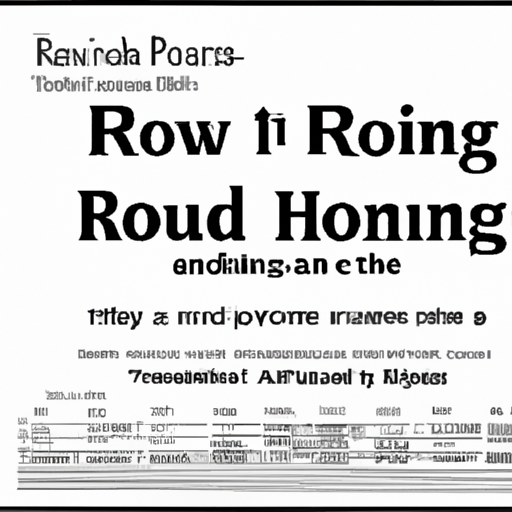
Comparisons and Alternatives
Comparison of rounding to the nearest hundredth with other rounding methods
Rounding to the nearest hundredth is just one of many rounding methods available. Other common methods include rounding to the nearest whole number, nearest tenth, or nearest thousandth. The choice of which method to use depends on the desired level of precision and practicality for the specific application.
Exploration of alternatives to rounding
While rounding is generally effective and widely used, there are situations where alternatives may be preferred. Instead of rounding, one may choose to truncate (cutting off digits without rounding), representing values with scientific notation, or providing the full original value when precision is critical.
When to consider using different rounding strategies
Different rounding strategies may be appropriate in specific scenarios:
- Truncation may be preferred when preserving the original value without rounding is necessary.
- Scientific notation is useful in conveying very large or very small numbers with precision.
- Full representation is required when precision is crucial, such as in scientific experiments or sensitive financial calculations.
Conclusion
Summary of the importance and techniques of rounding to the nearest hundredth
Rounding to the nearest hundredth is a valuable skill in everyday life, mathematics, and various professional fields. It allows for efficient calculations, clear communication of numbers, and simplification of data. By understanding the rounding rules, incorporating significant figures, and using mental math techniques, you can master the art of rounding to the nearest hundredth.
Final thoughts and encouragement for practicing rounding skills
Practicing rounding skills helps enhance mathematical fluency and promotes accuracy in practical applications. Whether you’re handling financial transactions, measuring ingredients, or analyzing scientific data, rounding to the nearest hundredth will make your calculations easier and more precise. So, keep honing your rounding skills and enjoy the benefits of accurate approximation in your everyday life.
